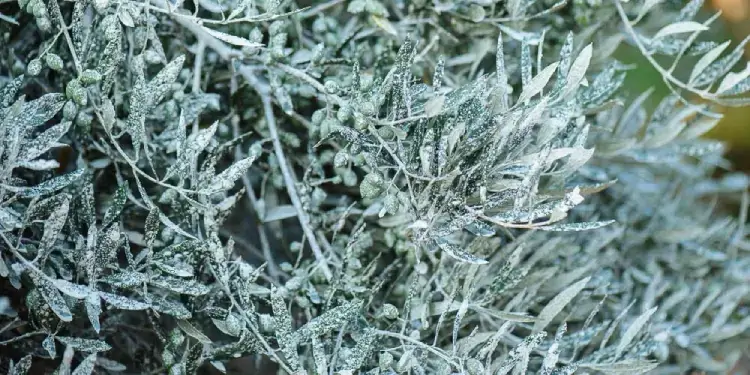In Greece we are used to heatwaves, with the thermometer climbing above 32 degrees Celsius most days. But are our trees and plants that used to it? Nature has once again provided, giving plants the ability to replenish during the evening hours, the cells that have been destroyed during the intense dry heat of the day during the summer periods. Greek flora, like most Mediterranean plants, love heat, but not too much.
But what happens from an agronomic point of view when temperatures are high?
Plants and trees return to the environment the water they take in as water vapor, through a process called transpiration, by opening their stomata. But under conditions of heat stress, because they don’t have excess water, they close them. Olive trees, for example, close their stomata at temperatures above 36°C, since they are resistant to high temperatures.
How can I tell if my plant is stressed due to heat?
Prolonged heat causes a lot of stress and problems with flowering, fruiting and growth in general. The first characteristic signs of stress due to excessive heat are twisting of leaves and wilting. This is because the rate of water loss through the transpiration process is greater than the rate at which the roots absorb water from the soil. Still, young trees up to 3 years old, such as citrus trees and some subtropical trees such as bananas and avocados, suffer burns on their leaves and fruits. Subsequently, if the dry conditions continue, there is cracking and fruit drop, and a corresponding drop in flowers to meet the remaining needs. As a result of this weakening, they remain vulnerable to various pests, such as, for example, Tetranychus urticae and Margaronia Palpita unionalis.
But what can we do to help them and avoid irreversible consequences?
So, let’s look at some simple practices!
Practice #1

Everyone’s first thought is of course … WATER, WATER, WATER. In really hot weather we water our plants daily, after of course checking the moisture in the soil. Remember an easy way, is to put your finger or a pencil, 2 cm into the soil. If the finger/pencil comes out dry, then we need to water.
Still, apart from daily watering, it is very important to do it at times of reduced sunshine, such as early morning and at dusk, as this evaporates very small amounts of water. As always, don’t overdo it, as there is a risk of suffocation and root rot, and remember that overwatering kills plants faster than lack of water, as oxygen diffusion through the air is much faster, compared to water.
Practice #2
Place your pots in a semi-shaded or shady spot if possible. If this is not an option, then we obtain netting or shade cloth from an agricultural supply store. Such cloths are commercially available with various permeabilities, from 30-95%. Note that the more the percentage of permeability increases, the greater the shading and therefore the less the amount of sunlight that passes to the plants. A suitable net for plants is one with permeability 30-40%.
Practice #3
Carving is known to help plant vigor. It improves structure, moisture retention and soil aeration, facilitating root growth. At the same time, it removes weeds, which compete for water from our plants. After hoeing, another task that will help a tree planted in the ground is to create a pit around the plants roots, which will help retain water and therefore moisture.
Practice #4
On days when the temperature exceeds 30 degrees Celsius, it is very helpful for our plants to have bark, dry leaves, straw or mowed grass on the surface around the soil, commonly known as ground cover. This way they are protected from the strong rays of the sun and water evaporates more slowly. At the same time, we create ”nests” for microorganisms friendly to our trees and plants, which encourage soil and nutrient aeration.
Practice #5
It is advisable when temperatures are particularly high, as far as vegetables and fruit trees are concerned, to harvest earlier than the heatwave, in order to reduce the risk of burns on the fruit and the stress on them. The latter is the case since leaving a ripe fruit on the tree consumes a great deal of energy and nutrients, while removing it relieves it.
#Avoidance Tips
- Beware, never get the leaves of your plants wet during the midday hours! Something that often creates misunderstandings is wetting the leaves. We have all thought that if we wet the leaves of our plant when it is too hot, we will help it to quench its thirst, just as we would do. But with this practice, we achieve the exact opposite effect. The reason is that the drops act like a magnifying glass that pulls in the sunshine, like a glass.
- We avoid any kind of fertilizer and plant protection (copper, sulphur and summer slurry) on very hot days, as they will create a lot of stress on our green friends. The only practice that helps is the use of seaweed extract, kaolin or zeolite. Besides being ecological, these preparations, when sprayed on plants, form a protective layer, like a film, which wards off the sun’s rays.
In addition, due to the natural hormones they contain (minerals, vitamins, antioxidants), seaweed provides resistance, eliminates heat stress and replenishes damaged cells. At the same time, their use after heat stress helps plants to recover faster. However, the best practice is to add them before high temperatures arrive.
Similarly, kaolin is a white-colored phyllosilicate mineral, which is why many people call it chalk. In our plants and trees it is used in powder form. It protects ecologically from sunburn, but also protects against the olive blight, the thrips in the vine and the pear flea.

- Still, in summer we avoid any kind of pruning. A time when our trees are under more stress than other seasons, we make sure not to add another one, as pruning is perceived by the tree as a ”wound” that it is trying to heal.
- Finally, another practice that exacerbates heat stress in potted plants is the use of dark-colored pots, such as the black plastic ones we all know. The reason is that dark colors absorb very large amounts of sunlight, encouraging even more warming. Of course, if we have no other choice, we move them to a place safer from the sun.
Let’s give our plants the attention they deserve, ensuring their well-being and thus the well-being of our green space.

